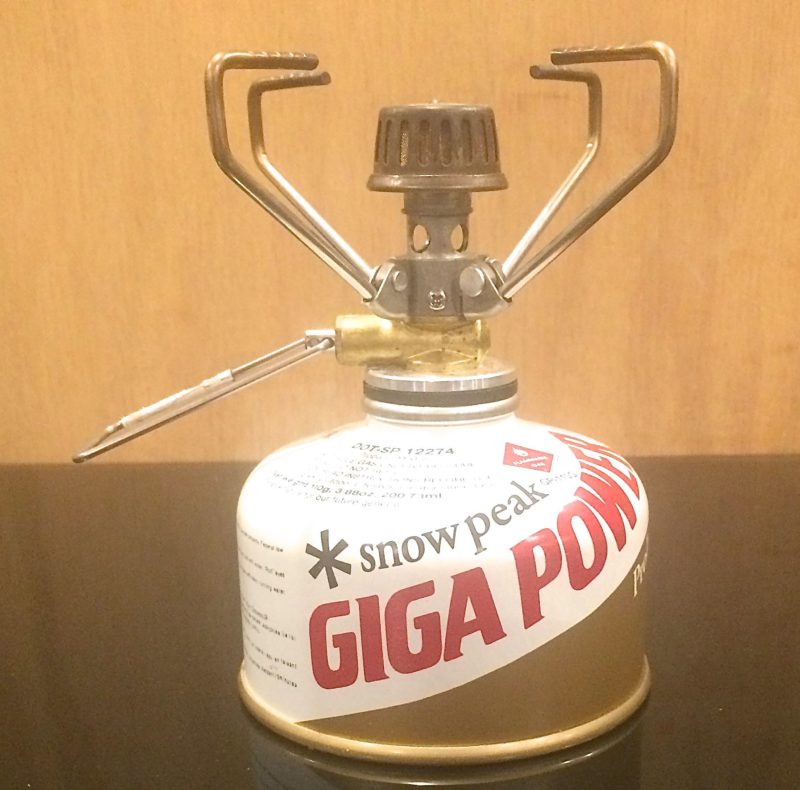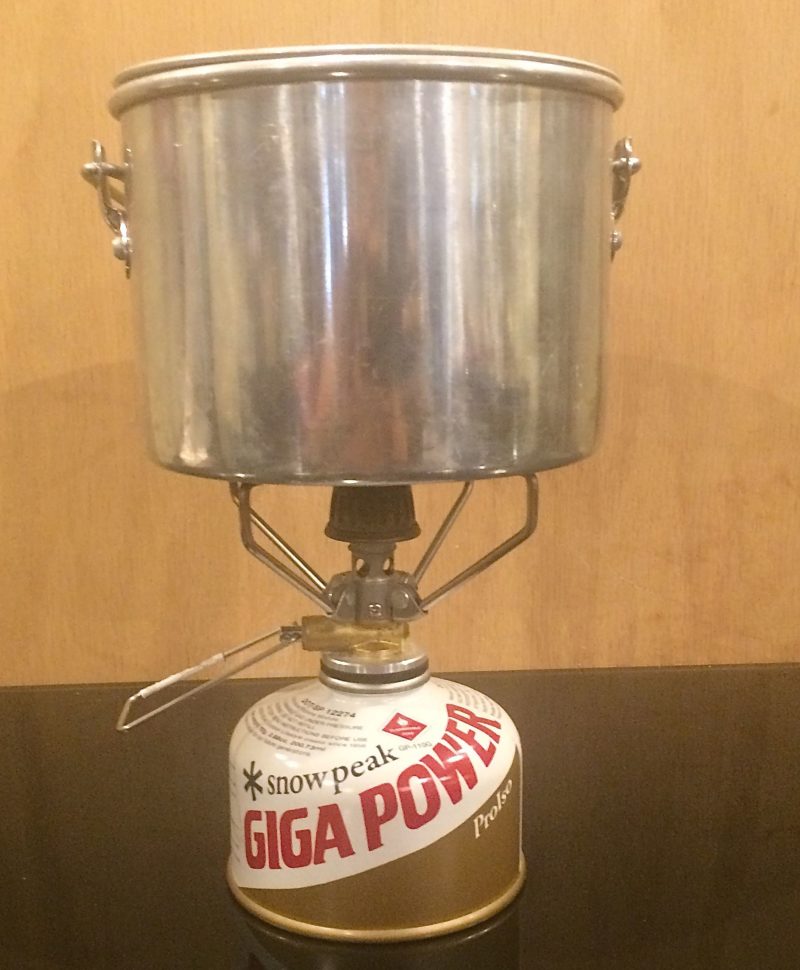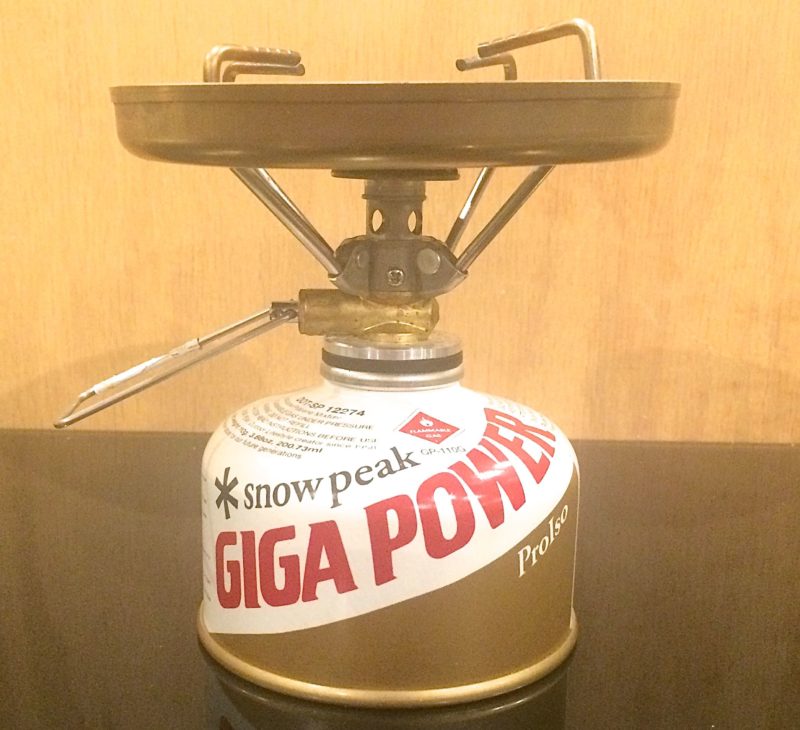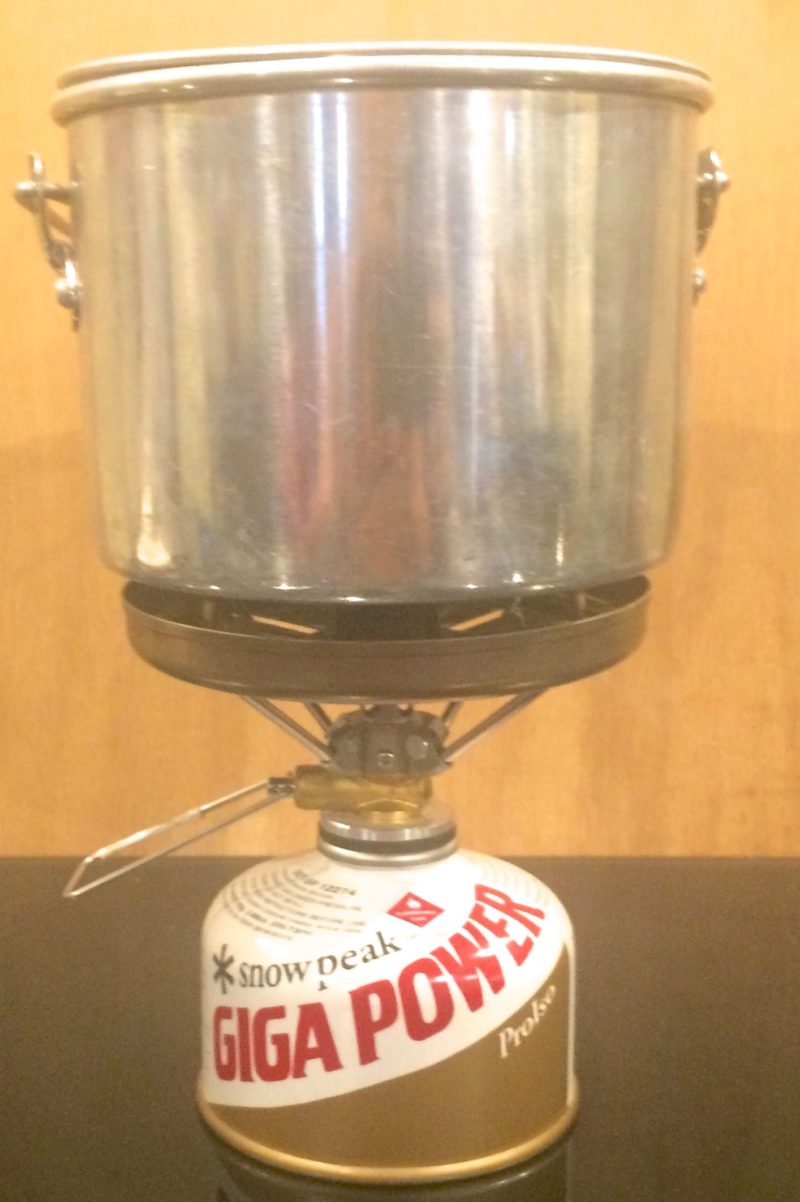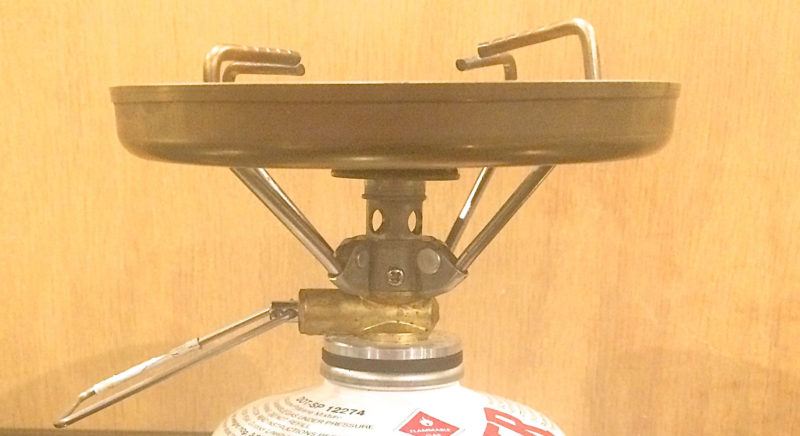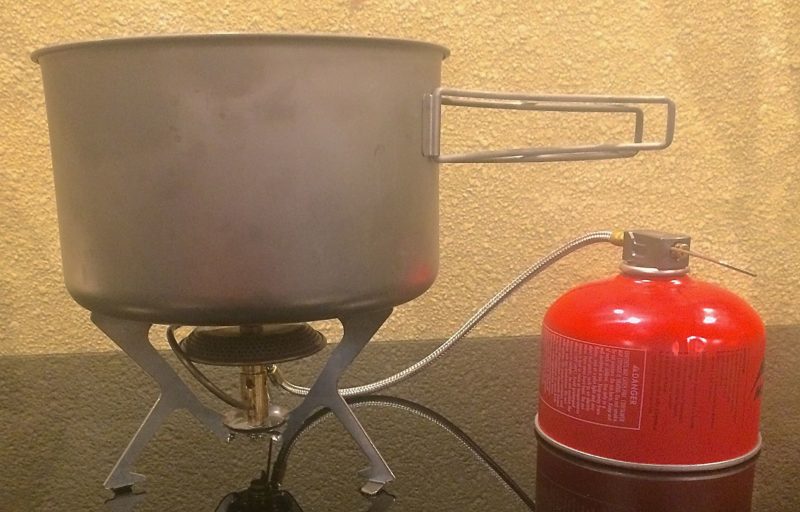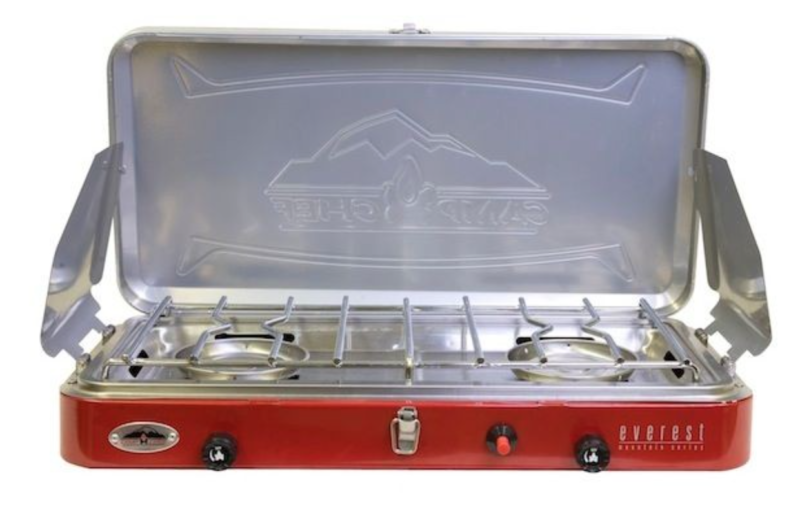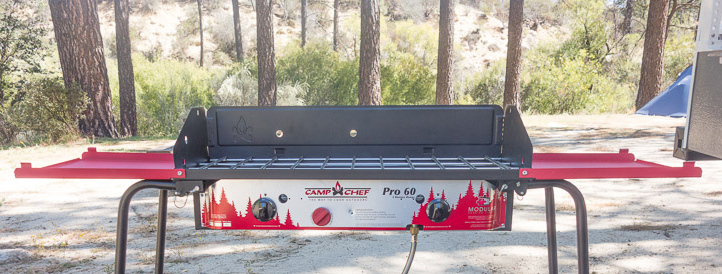
Cooking in Wind
Obviously when backpacking all cooking is done outside. The number one challenge with outdoor cooking is windy conditions. Although this post will focus on the modifications I made to our Camp Chef Pro 60 stove, the same principles apply to backpacking stoves.
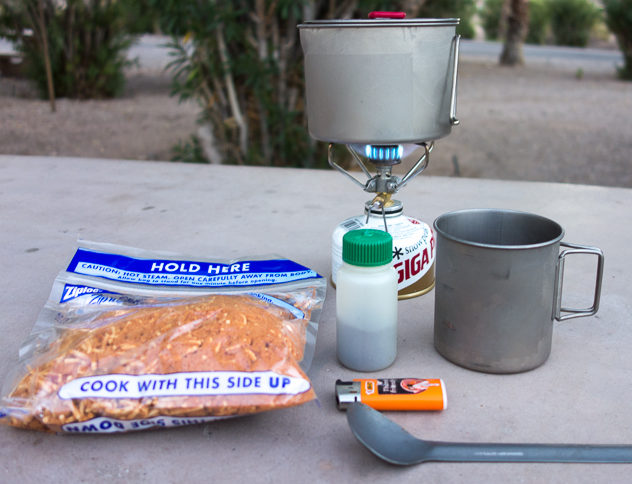
Physics
I rarely cook on a backpacking stove. Most of the time I just boil water with a full flame and cook my food using the freezer bag method. Cooking in the wind, especially simmering on most backpacking stoves is problematic at best. Most stoves are just not designed to operate well in the wind. Let’s take a look at the classic Snow Peak Giga Power stove as an example, the MSR WindPro II backpacking stove that does work in the wind, and then we will move to our Camp Chef Pro 60 camping stove modifications.
Snow Peak Giga Power backpacking stove
As you can see in the pictures below, the stove burner is completely exposed to any wind or even a slight breeze.
Snow Peak sells an optional windscreen that works fairly well, only the screen weighs almost as much as the stove, which is a something lightweight back packers abhor. Stove weight is 3 1/8 ounces, the screen weighs 2 ounces. Below are pictures of the screen attached to the stove.
How not to blow up your stove and die
Notice the amount of space between the windscreen and the canister. If a windscreen is too close to the canister, the canister can get too hot and result in an explosion and the accompanying fireball.
One way to make a backpacking stove wind resistant and safe is to design it so the canister does not connect directly to the stove, but is attached remotely with a hose. The downside to this is the stove is much heavier. One stove that does this well is the MSR WindPro II.
MSR WindPro II
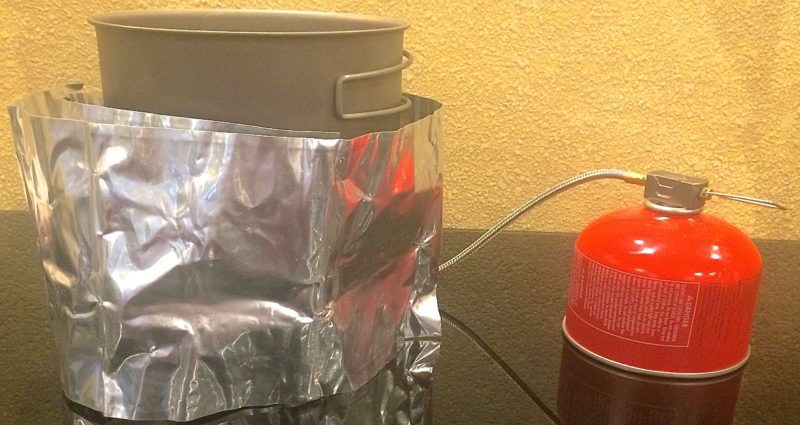
One other quick comment without going into detail. These small backpacking stoves do not use propane, they usually use a blend of propane and butane and the gas going to the stove does not work well in cold weather (e.g., below freezing). However, inverting the canister allows liquid not gas to feed the stove. Inverting the canister works well in cold weather.

Camping Stoves
When car camping or camping with a trailer, weight no longer becomes crucial, as it is to the backpacker. So one can get a better performing stove and use propane, which works well in very cold weather.
All of our campers have had indoor stoves. But we go camping to be outdoors. That means we cook outdoors. 99% of the time we only use the indoor stove to make coffee in the morning.
The search for the perfect camping stove
I have owned many camping stoves over the years. Some ran on white gas and some propane. Propane is just more convenient, plus we have two large tanks on the camper so it makes sense to use those instead of those 1 lb disposable bottles that are expensive compared to buying propane in bulk as we do.
Unlike when I am backpacking, we actually cook when camping — not boil water for freezer bag cooking. So given my 40+ years of camping experience I went shopping for a new stove when we bought our Milan travel trailer in 2013. I was well aware of the problem of wind and stoves, but needed to balance that with function.
Camp Chef Everest Stove
This is a great camping stove for most campers. But for us it had a few drawbacks:
- Burners put out 20,000 btu (we wanted 30,000 btu)
- Runs on high pressure propane (our camper delivers low pressure)
- It is too small for most of our camping pots and pans
We could have gotten by with 20K btu output.
Too small was the deal killer. So I continued my search and decided that a Camp Chef Pro 60 was almost perfect for our needs. Here are all the details about our Camp Chef Pro 60.
Almost perfect meant that I knew ahead of time that wind was a problem with this stove.
Camp Chef Pro 60 burner mod
Okay, if you remember from the backpacking stove discussion earlier, simply surrounding the Pro 60’s burners would be a simple fix. Armed with some aluminum flashing, metal snips, a drill, and rivet gun I went to work.
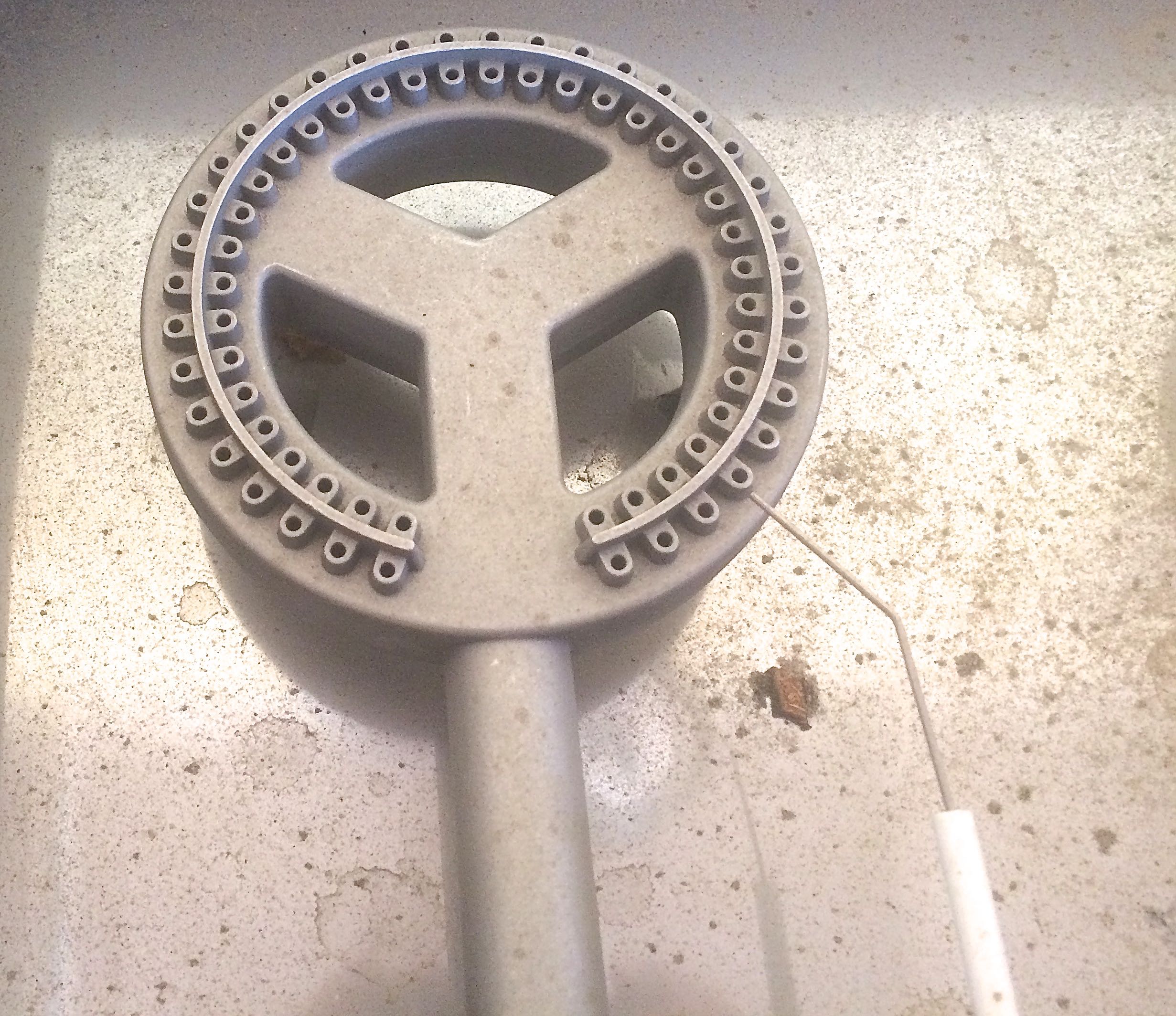
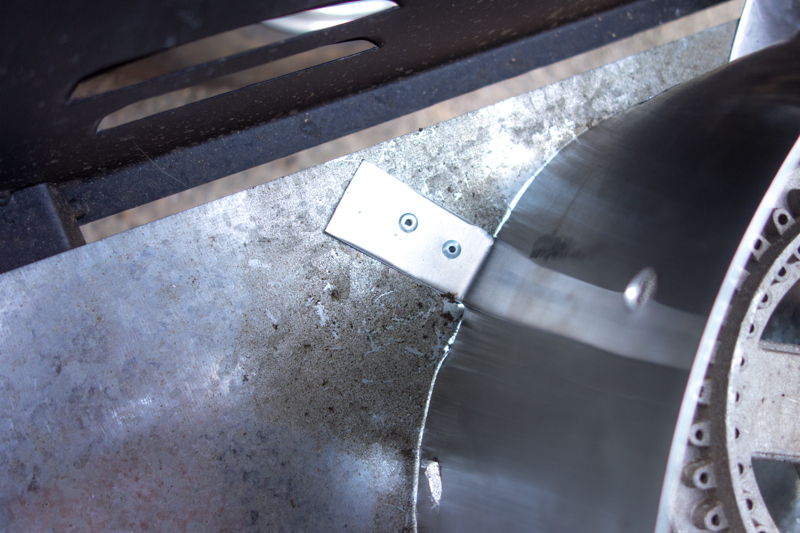
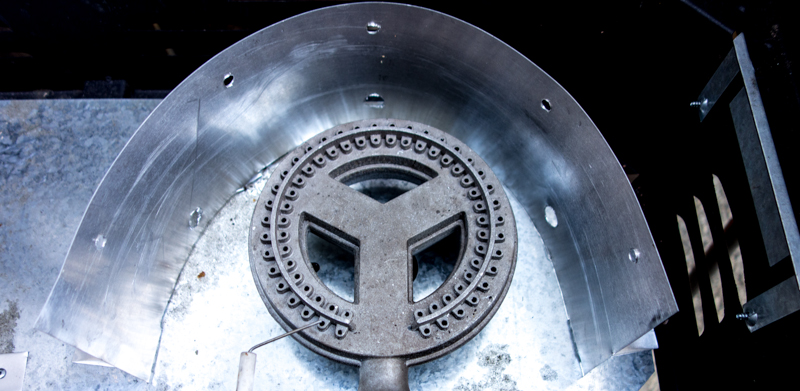

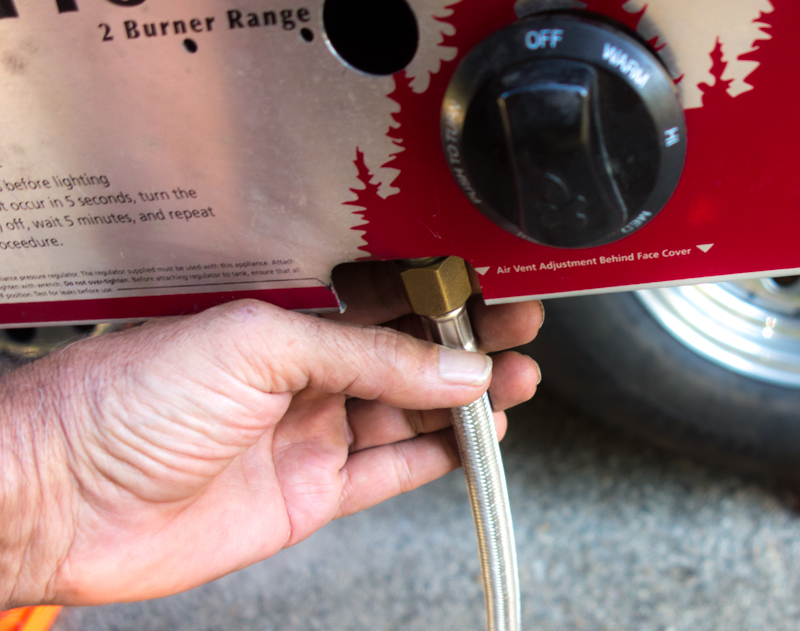
Results
The stove isn’t windproof when simmering in a strong wind, but it is fine in a breeze. I’ll let the reader define wind vs. a breeze. Overall it works much better than before, but it isn’t perfect. I’m happy with the results and it works for us.
This website may be compensated for linking to other sites for sales of products. As an Amazon Associate I earn a small fee from qualifying purchases at no additional cost to the purchaser.
